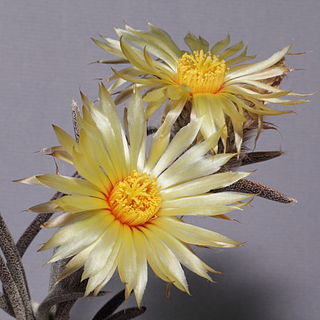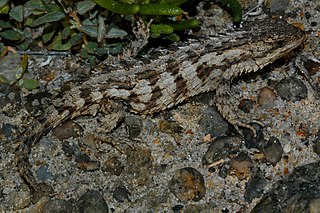
Caput medusae is the appearance of distended and engorged superficial epigastric veins, which are seen radiating from the umbilicus across the abdomen. The name caput medusae originates from the apparent similarity to Medusa's head, which had venomous snakes in place of hair. It is also a sign of portal hypertension. When the portal vein, that transfers the blood from the gastrointestinal tract to the liver, is blocked, the blood volume increases in the peripheral blood vessels making them appear engorged. It is caused by dilation of the paraumbilical veins, which carry oxygenated blood from mother to fetus in utero and normally close within one week of birth, becoming re-canalised due to portal hypertension caused by liver failure.The appearance is due to cutanous portosystemic collateral formation between distended and engorged paraumbilical veins that radiate from the umbilicus across the abdomen to join systemic veins.
Caput Medusae is Latin for "head of Medusa". It may also refer to:

The adjective hygrophanous refers to the color change of mushroom tissue as it loses or absorbs water, which causes the pileipellis to become more transparent when wet and opaque when dry.
The thoracoepigastric vein runs along the lateral aspect of the trunk between the superficial epigastric vein below and the lateral thoracic vein above and establishes an important communication between the femoral vein and axillary vein. This is an especially important vein when the inferior vena cava (IVC) becomes obstructed, by providing a means of collateral venous return. It creates a cavocaval anastomosis by connecting with superficial epigastric veins arising from femoral vein just below inguinal ligament.
In the course of the round ligament of the liver, small paraumbilical veins are found which establish an anastomosis between the veins of the anterior abdominal wall and the portal vein, hypogastric, and iliac veins. These veins include Burrow's veins, and the veins of Sappey – superior veins of Sappey and the inferior veins of Sappey.
A portacaval anastomosis or portocaval anastomosis is a specific type of circulatory anastomosis that occurs between the veins of the portal circulation and the vena cava, thus forming one of the principal types of portasystemic anastomosis or portosystemic anastomosis, as it connects the portal circulation to the systemic circulation, providing an alternative pathway for the blood. When there is a blockage of the portal system, portocaval anastomosis enables the blood to still reach the systemic venous circulation. The inferior end of the esophagus and the superior part of the rectum are potential sites of a harmful portocaval anastomosis.

Postelsia palmaeformis, also known as the sea palm or palm seaweed, is a species of kelp and classified within brown algae. It is the only known species in the genus Postelsia. The sea palm is found along the western coast of North America, on rocky shores with constant waves. It is one of the few algae that can survive and remain erect out of the water; in fact, it spends most of its life cycle exposed to the air. It is an annual, and edible, though harvesting of the alga is discouraged due to the species' sensitivity to overharvesting.
Bulbine caput-medusae is a species of plant in the Asphodelaceae family. It is endemic to Namibia. Its natural habitats are dry savanna and hot deserts.

Tillandsia caput-medusae is a species of flowering plant in the bromeliad family, Bromeliaceae, subfamily Tillandsioideae. Common names include octopus plant and medusa's head. An epiphyte native to Central America and Mexico, T. caput-medusae is a commonly cultivated bromeliad species. The thick, channeled, tapering and twisting leaves are up to 25 cm (9.8 in) long and are covered in fine gray hairs. The rosette of leaves arise from an inflated pseudobulb. Pups are produced after blooming, as is usual with most Tillandsia species.

The Blue Oak Ranch Reserve, a unit of the University of California Natural Reserve System, is an ecological reserve and biological field station in Santa Clara County, California. It is located on 3,260 acres (13.2 km2) in the Diablo Range, northwest of Mount Hamilton, at 1,500 ft (460 m) elevation.

Taeniatherum is a genus of Eurasian and North African plants in the grass family.

Hordelymus is a genus of European, north African, and southwest Asian plants in the grass family.

Euphorbia caput-medusae is a plant of the genus Euphorbia that occurs in and around Cape Town, South Africa.
Medusahead is the common name of more than one species of plant, including:

Urania's Mirror; or, a view of the Heavens is a set of 32 astronomical star chart cards, first published in November 1824. They are illustrations based on Alexander Jamieson's A Celestial Atlas, but the addition of holes punched in them allow them to be held up to a light to see a depiction of the constellation's stars. They were engraved by Sidney Hall, and were said to be designed by "a lady", but have since been identified as the work of the Reverend Richard Rouse Bloxam, an assistant master at Rugby School.

Astrophytum caput-medusae is a species of cactus native to Mexico, specifically the state of Nuevo León; the plant is reported to grow wild only at a single location. This species differs from the conventional star-shaped phenotype associated with other Astrophytum members. The plant is characterized by a cylindrical, reduced stem with triangular or cylindrical tubercles producing yellow flowers with orange perianth sections. Propagation by seed, tissue culture or via grafting have all been reported. The species is considered critically endangered by the IUCN due to the plant's limited growth range, destruction by livestock and over collection of wild specimen by plant collectors

A developmental venous anomaly is a congenital variant of the cerebral venous drainage. On imaging it is seen as a number of small deep parenchymal veins converging toward a larger collecting vein.

Cordylus macropholis, the large-scaled girdled lizard, is a small (55-77 mm) lizard endemic to the west coast of South Africa. They spend most of their time on and around a single plant species, Euphorbia caput-medusae which only occupies around 5% of the vegetation present. It is thought that they restrict themselves to these plants because they provide safer hiding places than most other shrubs, house a large range of invertebrate prey, and provide good thermal microhabitats. They can additionally be found sunbathing on, or hiding in between rocks, as these could provide protection from larger predators from which their physical adaptations might not provided them with adequate protection.












